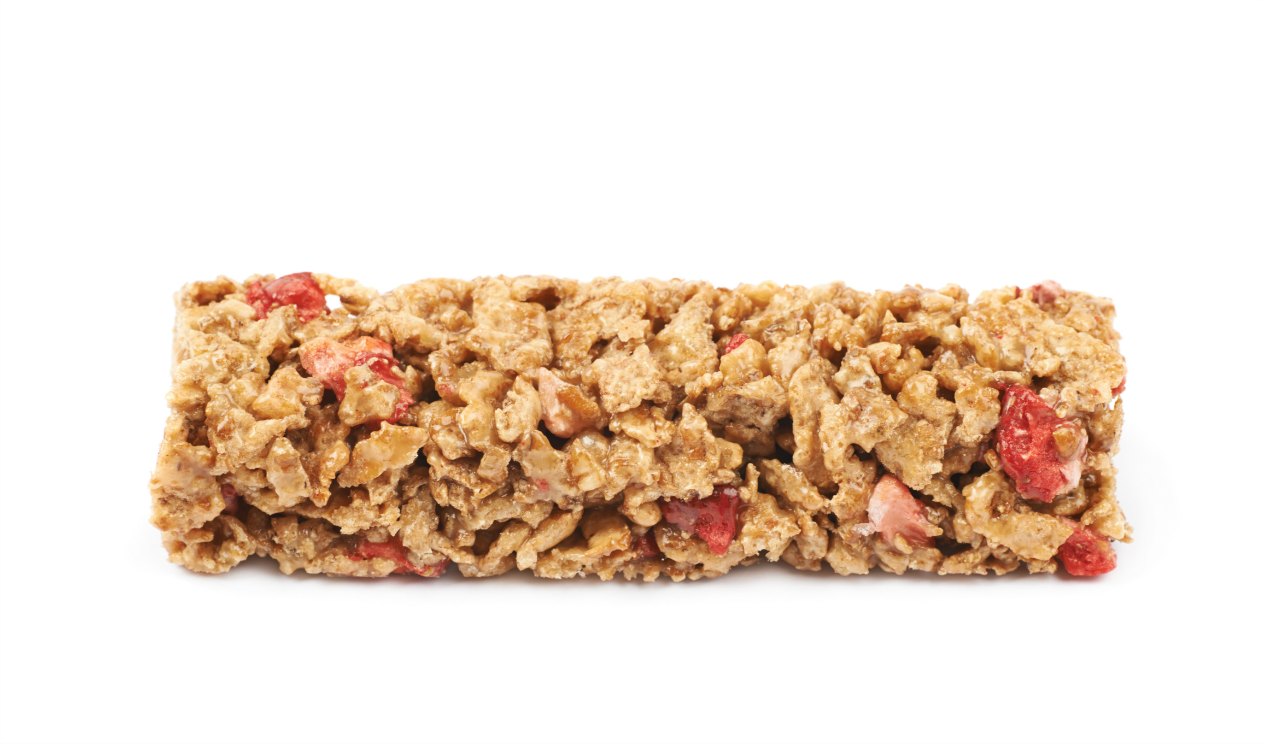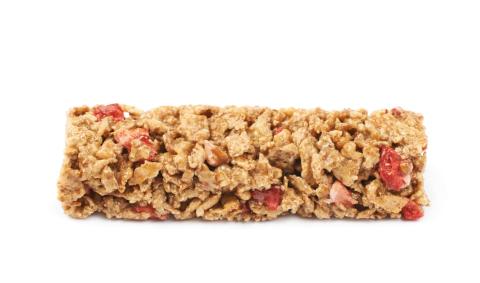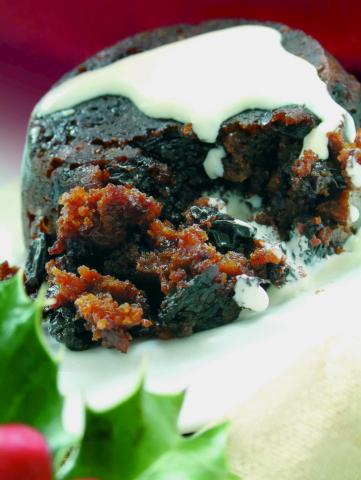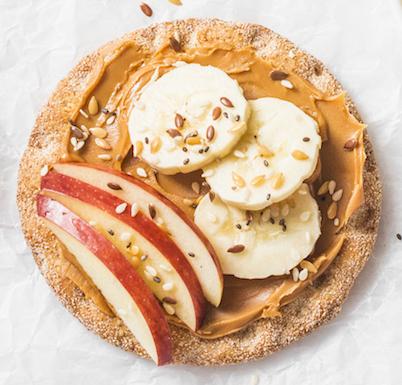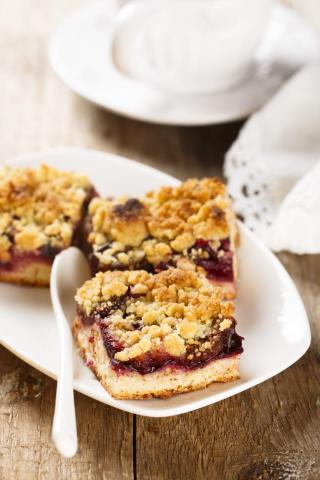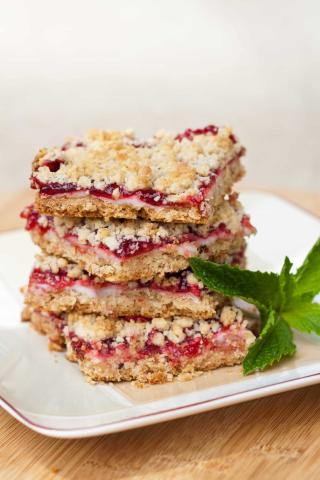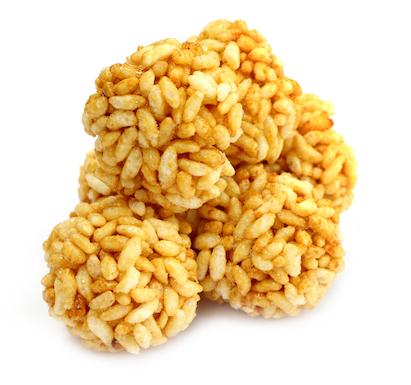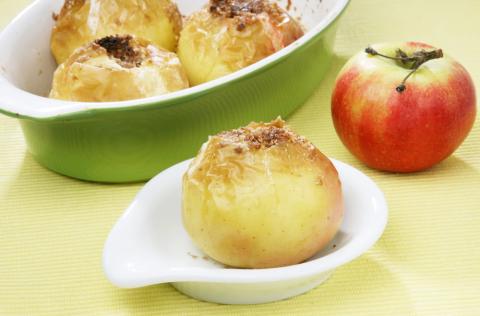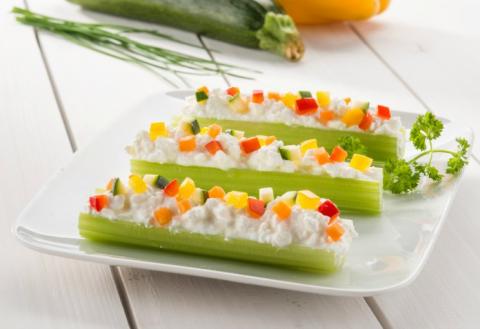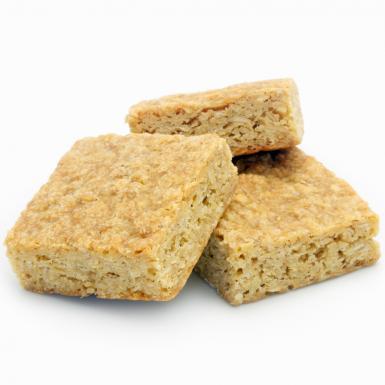- 5 Tablespoons (80g) Low Fat Spread
- 3 Cups (250g) Porridge Oats
- 1 ½ Tablespoons Honey
- 2 Tablespoons (40g) Brown Sugar
- 1 Teaspoon (3g) Dried Cinnamon
- 3 Tablespoons (80g) Dried Berries
Ingredients
Allergy Disclaimer
Always check the label of each ingredient for allergy warnings.
Method
- Preheat the oven to 160°C / 140°C fan oven / 310°F / gas mark 3. Line a 18cmx25cm tin with grease proof (baking) paper.
- On a baking tray spread out the porridge oats and bake in the oven for 5-10 minutes until toasted.
- Meanwhile warm the spread, honey and sugar in a pan over a low heat stirring until the spread melts.
- Add the oats to the pan and mix in along with cinnamon and berries.
- Tip the mixture into the lined baking tin and press lightly smoothing evenly with the back of a spoon. Bake in the oven for approximately 30 minutes.
- Cool in tin and then cut into bars.
Time Saver Tips
Make in advance and stored in an airtight container once cooled.
Cost Saver Tips
Look for offers and try other dried fruit such as sultanas or chopped apricots
Tips for Kids
They will enjoy mixing the ingredients and pressing it into the tin. As this recipe contains added sugar it’s best kept to mealtimes.
Nutritional Information
Based on a single serving of 48g (% of an adult's reference intake)
Energy
183 kcals ( 9 %)
769 kJ ( 9 %)
Fat
0.9 g ( 5 %)
Saturates
32.5 g ( %)
Sugar
14.8 g ( 16 %)
Salt
0.1 g ( 2 %)
Detailed nutritional information
| Per 100g | Per 48g serving | |
|---|---|---|
| Energy Kcals | 382 | 183 |
| Energy Kj | 1,604 | 769 |
| Protein | 7.3 g | 3.5 g |
| Total Fat | g | g |
| Saturated Fat | 1.9 g | 0.9 g |
| Carbohydrates | 67.7 g | 32.5 g |
| Total Sugars | 0.9 g | 14.8 g |
| NSP Fibre | 3.7 g | 1.8 g |
| Sodium | 131 mg | 63 mg |
| Salt | 0.3 g | 0.1 g |
Find out about nutritional labelling
Nutrition labels on the front of packaging
- Most of the big supermarkets and many food manufacturers display nutritional information on the front of pre-packed food.
- Front of pack nutrition labels provide information on the number of grams of fat, saturated fat, sugars and salt and the amount of energy (in kJ and kcal) in a serving or portion of a recipe.
- The labels also include information about reference intakes (expressed as a percentage) which are guidelines about the approximate amount of particular nutrients and energy required for a healthy diet.
- The colour coding tells you at a glance if the food has high (red), medium (amber) or low (green) amounts of fat, saturated fat, sugars and salt.
- The more greens on the label, the healthier the choice
- Amber means neither high nor low, so you can eat foods with all or mostly ambers on the label most of the time.
- Reds on the label means the food is high in that nutrient and these are the foods we should cut down on. Try to eat these foods less often and in small amounts.
Food shopping tips
If you’re trying to decide which product to choose, check to see if there's a nutrition label on the front of the pack. This will help you to quickly assess how your choices stack up. You will often find a mixture of red, amber and green colour coding for the nutrients. So when you're choosing between similar products, try to go for more greens and ambers and fewer reds if you want to make a healthier choice.
 Activities & Play
Activities & Play Behaviour
Behaviour Childcare
Childcare Development & Growing Up
Development & Growing Up Family, Friends & Relationships
Family, Friends & Relationships Feeding Your Baby
Feeding Your Baby Food & Eating
Food & Eating Health & Safety
Health & Safety Mental Health & Wellbeing
Mental Health & Wellbeing Money & Work
Money & Work Online Behaviour & Safety
Online Behaviour & Safety Pregnancy & First Days
Pregnancy & First Days School & Education
School & Education Sleep
Sleep

